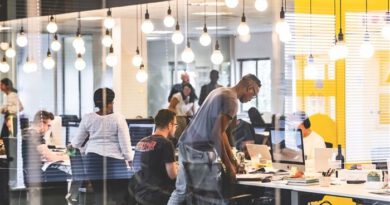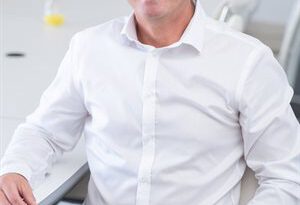How to create a more productive office space
What does your office space say about your business? Is it ultra-trendy or unexciting? Does it inspire confidence in your workforce, clients and visitors? Studies show that contented employees are productive employees, who are happy to spend a third of their working week in the office.
Our environment exerts a great influence on us, so an unpleasant working environment will result in reduced productivity, ill health and discontent. Studies have shown that at least 50% of employers regard workspace design as money wasted. Other studies show that attitude is wrong. Focusing on the success of the company, they forget that success depends largely on the workforce.
A well-designed office space could raise production figures by almost 20%. Certain factors contribute to a more productive workspace, such as layout, noise, colour scheme, furniture, temperature, air quality, lighting and plants.
Careful design is essential
Whether relocating to new premises or revamping an old office space, careful design is essential, and the nature of the business will dictate the final layout. Innovative departments often require open areas, as sharing ideas aids the creative process. However, whether you have open-plan or closed offices, employees require sufficient space to perform their tasks efficiently, so having to work in a crowded tiny space will reduce their productivity. The cubicle trend gave way to open-plan design, but neither style has been totally successful, as the accompanying noise and distractions impact on productivity.
Current trends lean towards smaller executive offices and public areas, with glass walls providing enough privacy to encourage focus on the set task. Break rooms are often disregarded, but they are a necessary addition to every office design. A few minutes’ break from the workstation can greatly improve an employee’s concentration and productivity.
Important role of colour
Colour plays an important role in the health and performance of employees; it affects moods and brain function, which directly influences productivity. Grey, beige and brown were popular colour choices in the past, but these promote a general sense of laziness, while white appears efficient but provides little stimulation. Red intensifies emotions, reduces analytical thinking and arouses the appetite. Blue is calming and peaceful, encouraging greater productivity, but can make a space appear cold; green and orange encourage broad-thinking and creativity, and pink is calming and relaxing. Tasteful paintings or pictures on the walls, particularly nature and landscapes that tone with the general colour scheme, can ease stress and promote productivity by providing a different dimension at which to look.
Sitting at a desk for most of the day necessitates a comfortable chair for optimal concentration. Ergonomically designed furniture is important for staff posture and health. New trends in office furniture include kneeling chairs for typists and sit–stand desks that can be raised or lowered as required. Adequate storage is necessary for reducing clutter; storage units make excellent dividers between desks, increasing privacy and minimising distractions.
Air quality and lighting impacts
Air quality is another important point to consider, as this affects employees’ ability to think or focus clearly. Fresh air is preferable, but modern buildings tend to have in-built air-conditioning, so installing air filters is a good idea. Planters filled with palms or ferns arranged around the offices will lift employees’ spirits and make the place more attractive. They also absorb significant amounts of chemical compounds from the air given off by plastics, synthetic fabrics, paint and cleaning materials.
Lighting impacts heavily on health, mood and productivity, yet is often neglected by employers. Access to windows and sunlight is optimal, but artificial lighting may be improved with daylight bulbs, which provide softer, warmer illumination. Bright lighting is beneficial to analytical thought processes, though harsh fluorescent lighting may cause UV-related eye disease. Bad lighting causes fatigue, eyestrain, headaches and lack of focus. Using mirrors in the décor helps to increase ambient light.
Timeless design
A good office revamp must last for several years, as it is too costly to repeat frequently. The design should, therefore, be timeless and not follow any trends. Extreme trends may last a year or two, then become outdated. A classic design updated with small touches every couple of years won’t break the bank, but will energise both the business and the workforce. Keep your target market in mind, but do not disregard the well-being and motivation of your staff, who are the backbone of your business. They must enjoy being at work each day in order to perform to their best ability.
Source: bizcommunity.com



